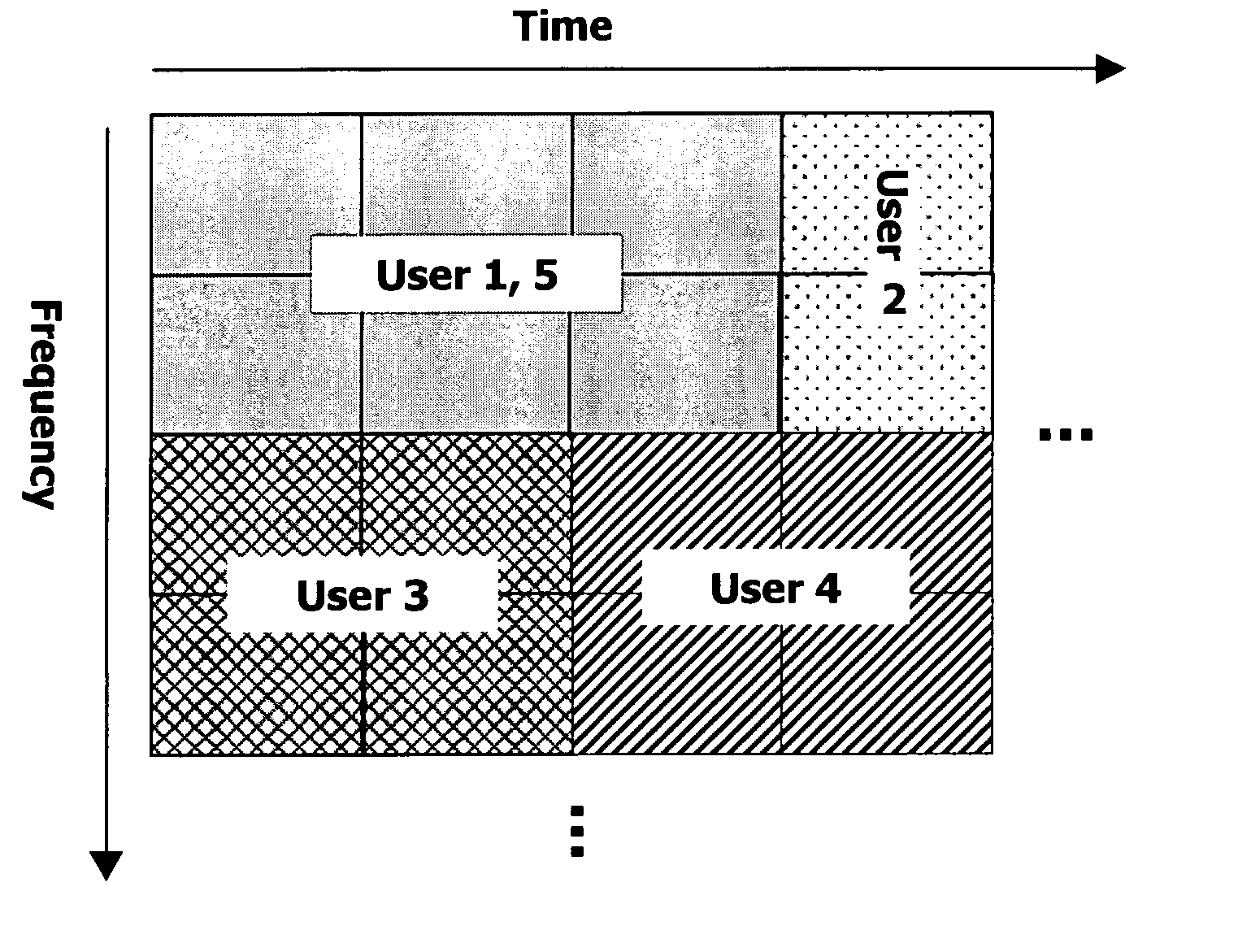Allocation of radio resource in orthogonal frequency division multiplexing system
a radio resource and orthogonal frequency division technology, applied in orthogonal multiplex, multiplex communication, wireless commuication services, etc., can solve the problems of insufficient benefits of multiplication method and inability to meet such requirements in the appropriate way
- Summary
- Abstract
- Description
- Claims
- Application Information
AI Technical Summary
Benefits of technology
Problems solved by technology
Method used
Image
Examples
Embodiment Construction
[0054] Reference will now be made in detail to the preferred embodiments of the present invention, examples of which are illustrated in the accompanying drawings. Hereinafter, preferred embodiments of the present invention will be explained with reference to the accompanying drawings as follows.
[0055] The present invention is a technology for enlarging uplink capacity, which allows many mobile terminals to simultaneously use a radio resource allocated to one mobile terminal. A mobile terminal requires a variation of a pilot or a reference signal for measuring radio channels, while a base station requires a method for decoding data (or signals) of a plurality of mobile terminals transmitted using one radio resource and a method for controlling power to reduce an affect of a signal interference due to an increase of users.
[0056]FIG. 5 illustrates an uplink radio resource allocation in an OFDM / OFDMA system, according to one embodiment of the present invention, in which it is assumed ...
PUM
 Login to View More
Login to View More Abstract
Description
Claims
Application Information
 Login to View More
Login to View More - R&D
- Intellectual Property
- Life Sciences
- Materials
- Tech Scout
- Unparalleled Data Quality
- Higher Quality Content
- 60% Fewer Hallucinations
Browse by: Latest US Patents, China's latest patents, Technical Efficacy Thesaurus, Application Domain, Technology Topic, Popular Technical Reports.
© 2025 PatSnap. All rights reserved.Legal|Privacy policy|Modern Slavery Act Transparency Statement|Sitemap|About US| Contact US: help@patsnap.com



